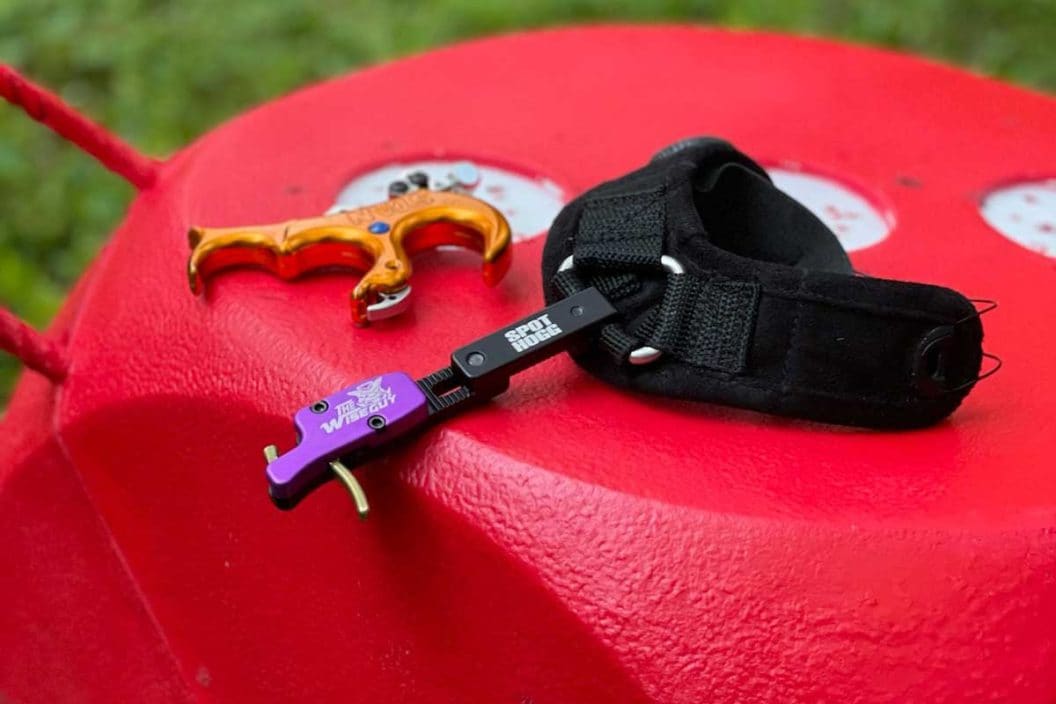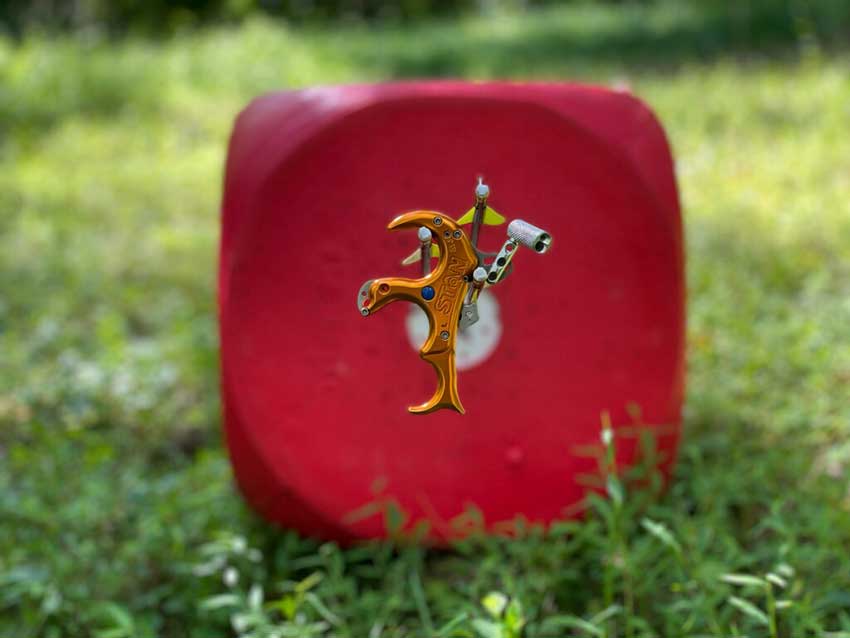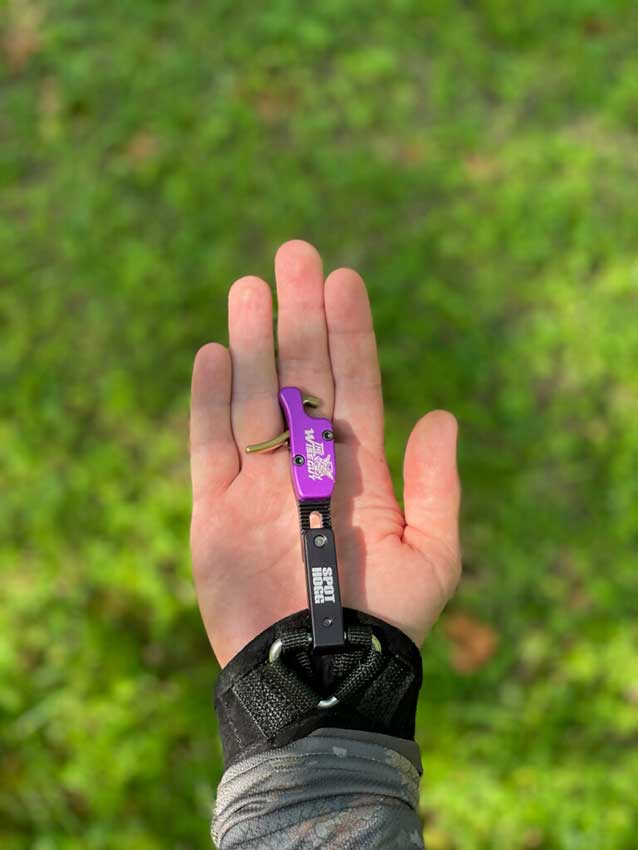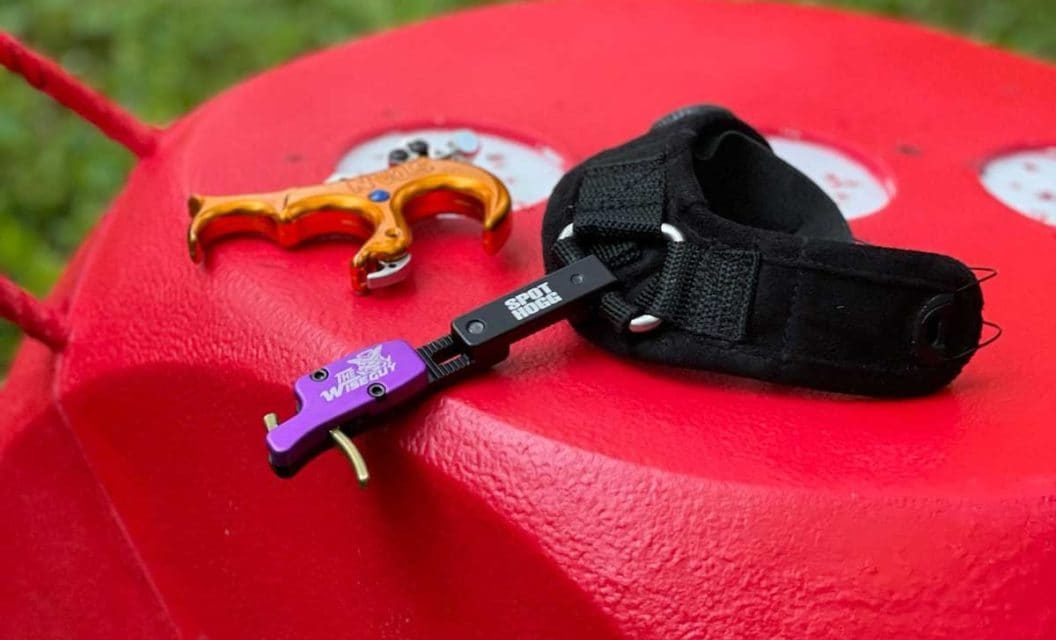
Of the different types of releases for bowhunting, the two most common variations are the standard index release and the increasingly-popular thumb release. It’s easy to see why–both are reliable, simple to use, and can get the job done when the buck of your dreams steps out and you have very little time to think. But when it comes down to the thumb vs. index release, which one is more consistent? Which will help you shoot your bow more accurately and confidently?
A few years ago, I was thinking about whether or not I needed to switch from my index release to a thumb button style. It’s not that I was shooting poorly with the index, but the idea of using my thumb seemed like a more natural motion. So I decided to put the thumb vs. index release to the test. Here’s what I found.
Thumb Release

Dylan Hayward
The growing popularity of the handheld thumb release made it enticing to switch. After all, if the pros are doing it, shouldn’t I be doing it? There are some great advantages of using a thumb button release. Drawing back and locking in to the back wall feels much more natural, and honestly a lot smoother.
One of the biggest advantages I have found with using a thumb button over an index trigger is the ability to develop a surprise release quickly. Using your thumb to release instead of your index can prevent punching, which is arguably one of the biggest factors in shot consistency, and easily the number one thing I look for when I help other people with their shooting. This isn’t to say that if you switch to a thumb release that your trigger punching will be gone forever. You’ll still want to work on developing a smooth and subconscious trigger pull, but that process seems much easier with a thumb release.
While there are many great things about the thumb release, there were also a few issues that might be hard for an index loyalist to get over. The first is a change in anchor points. With a thumb release, you’ll have a completely different grip, and your hand will be in a different position at full draw. I found that I needed to adjust my anchor points slightly. While this isn’t a huge deal, it’s definitely an adjustment, and one that some people might not want to adapt to.
Another big downside of the thumb release is that most of them lack a wrist strap. This sounds like I’m nitpicking, but I witnessed this downside firsthand a couple of years ago. I was filming my friend on a whitetail hunt, and the buck we were after stepped out at 20 yards. My friend dropped his release. Needless to say, the buck took off and we never got another chance at him again. I would advise anyone that is switching to a thumb release to invest in one with a built-in wrist strap.
Pros:
- Fluid Motion
- Less Punching
- Consistency
Cons:
- Need to Adjust Anchor Points
- No Wrist Strap
- Hard to Grip with Gloves
- Need to Cock Before Use
- Typically More Expensive
Index Release

Dylan Hayward
As far as simplicity goes, you really can’t beat the traditional index release. There is a reason that all new bowhunters start with this style, as you can just fasten the wrist belt and start shooting. There is some comfort in that simplicity. You know that when your target buck steps out, you don’t have to think so much about your release, and you can focus solely on making a good shot.
I have used an index release for years. Until I decided to experiment with a thumb release, I figured that if it isn’t broke, don’t fix it. Many bowhunters probably feel similarly. While there is definitely some truth to that statement, I think it’s important that we always try to find better ways to improve our accuracy and become better bowhunters.
The simplicity and comfort of using an index release is great, but there are definitely some negatives. I’ve found that you’re much more likely to punch your trigger with an index release, which over time can cause some extreme target panic, a characteristic that all bowhunters want to avoid like the plague.
Punching your trigger with an index release doesn’t have to be inevitable. With consistent practice of developing that surprise trigger, you’ll still be able to have consistent shot placement without having to worry about changing releases. If punching is particularly bad, you can shorten the release on your trigger and fire with a combination of your back muscles and the first joint of your index finger near the knuckle. This can feel awkward at first, but is one solution for more consistency with index releases. Still, thumb releases will make this process much easier.
Pros
- Simple to Use
- Wrist Strap
- Inexpensive
Cons
- Trigger Punching
- More Target Panic
- Less Consistent Form
What Should You Use?

Dylan Hayward
Like most things in bowhunting, the release you use will ultimately come down to what is most comfortable for you. In my experience, I found that a thumb release results in more consistent shooting, but to this day I prefer to use my index release because of its simplicity. There’s also no chance of me losing it in the field.
I highly recommend every bowhunter branches out and experiments with both to find out which works best for them. Thumb releases can be much more expensive, but they’re a great investment if they help your shooting.
READ MORE: Bowhunter Tests Completely Plastic Broadhead on Feral Hogs
The post Thumb vs. Index Release: Does One Provide More Consistent Bow Shots? appeared first on Wide Open Spaces.
















